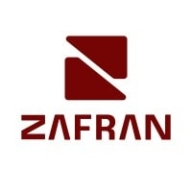


IBM Guardium Vulnerability Assessment and SentinelOne Singularity Cloud Security compete in the cybersecurity space, focusing on vulnerability management and cloud security, respectively. SentinelOne appears to have the upper hand due to its comprehensive protection features that justify a higher cost.
Features: IBM Guardium Vulnerability Assessment includes robust vulnerability scanning, effective risk prioritization, and compliance management. SentinelOne Singularity Cloud Security provides advanced threat detection, automated response, and machine learning-driven analytics.
Room for Improvement: IBM Guardium could benefit from enhancing its threat detection, automating its response capabilities, and integrating more advanced analytics. SentinelOne might improve with streamlined deployment, cost-effectiveness, and user-friendly interfaces.
Ease of Deployment and Customer Service: IBM Guardium offers straightforward deployment with strong support, making implementation smoother. SentinelOne requires more complex orchestration but addresses deployment challenges with timely support.
Pricing and ROI: IBM Guardium typically has a lower setup cost and presents a more immediate ROI through its pricing strategy. SentinelOne, though more expensive, delivers solid long-term ROI with its innovative solutions.


Zafran Security integrates with existing security tools to identify and mitigate vulnerabilities effectively, proving that most critical vulnerabilities are not exploitable, optimizing threat management.
Zafran Security introduces an innovative operating model for managing security threats and vulnerabilities. By leveraging the threat exposure management platform, it pinpoints and prioritizes exploitable vulnerabilities, reducing risk through immediate remediation. This platform enhances your hybrid cloud security by normalizing vulnerability signals and integrating specific IT context data, such as CVE runtime presence and internet asset reachability, into its analysis. No longer reliant on patch windows, Zafran Security allows you to manage risks actively.
What are the key features of Zafran Security?
What benefits can users expect from Zafran Security?
In industries where security is paramount, such as finance and healthcare, Zafran Security provides invaluable protection by ensuring that only exploitable vulnerabilities are addressed. It allows entities to maintain robust security measures while allocating resources efficiently, fitting seamlessly into existing security strategies.
IBM Guardium Vulnerability Assessment scans data infrastructures (databases, data warehouses and big data environments) to detect vulnerabilities, and suggests remedial actions. The solution identifies exposures such as missing patches, weak passwords, unauthorized changes and misconfigured privileges.
SentinelOne Singularity Cloud Security protects cloud workloads, offering advanced threat detection and automated response. It integrates seamlessly with cloud environments and secures containerized applications and virtual machines against vulnerabilities.
SentinelOne Singularity Cloud Security is renowned for its efficiency in mitigating threats in real-time. The platform integrates effortlessly with existing cloud environments, ensuring robust cloud security management with minimal manual intervention. Securing containerized applications and virtual machines, it excels in threat intelligence and endpoint protection. However, improvements are needed in performance during high workload periods, and more integrations with third-party tools and better documentation would be beneficial. Users often find the installation process complex, support response times slow, and the dashboard's navigation unintuitive.
What are the key features of SentinelOne Singularity Cloud Security?In specific industries, SentinelOne Singularity Cloud Security is implemented to safeguard critical data and infrastructure. Organizations in finance, healthcare, and technology depend on its real-time threat detection and automated response to protect sensitive information. Its ability to secure containerized applications and virtual machines is particularly valuable in dynamic environments where rapid scaling is necessary.
We monitor all Vulnerability Management reviews to prevent fraudulent reviews and keep review quality high. We do not post reviews by company employees or direct competitors. We validate each review for authenticity via cross-reference with LinkedIn, and personal follow-up with the reviewer when necessary.